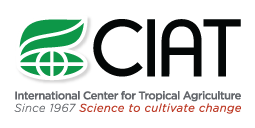|
Persistent Identifier
|
doi:10.7910/DVN/D6GU8U |
|
Publication Date
|
2018-12-05 |
|
Title
| Replication Data for: A comparison study of five different methods to measure carotenoids in biofortified yellow cassava (Manihot esculenta) |
|
Author
| Jaramillo, Angélica MInternational Center for Tropical Agriculture - CIAT, HarvestPlusORCID0000-0002-7463-6816
Londoño, Luis FernandoInternational Center for Tropical Agriculture - CIAT, HarvestPlusORCID0000-0003-0384-6055
Orozco, Juan CamiloInternational Center for Tropical Agriculture - CIAT, HarvestPlus
Patiño, GelverInternational Center for Tropical Agriculture - CIAT, HarvestPlus
Belalcazar, JohnInternational Center for Tropical Agriculture - CIATORCID0000-0002-4418-2526
Davrieux , FabriceCentre de coopération internationale en recherche agronomique pour le développement - CIRAD
Talsma, EliseInternational Center for Tropical Agriculture - CIAT, HarvestPlus, Wageningen UniversityORCID0000-0002-6034-4708 |
|
Point of Contact
|
Use email button above to contact.
CIAT Data and Research Methods (International Center for Tropical Agriculture - CIAT) |
|
Description
| The most commonly used method for measuring carotenoid concentration is high-performance liquid chromatography (HPLC). Nevertheless, easier, quicker, and less costly proxy methods exist. We aimed to determine the diagnostic performance of several proxy methods: the spectrophotometer, iCheck Carotene, and near-infrared spectroscopy using both a desktop (dNIRS) and a portable (pNIRS) device for the measurement of total carotenoid concentration (TCC) and all-trans-β-carotene concentration (trans-BC) in 30 fresh cassava (Manihot esculenta Crantz) storage roots in comparison with HPLC.
The spectrophotometer presented the highest predictability for TCC, followed by iCheck, dNIRS, and pNIRS. The dNIRS showed the highest predictability and agreement for trans-BC. The pNIRS showed the poorest repeatability and greatest underestimations compared with HPLC. The agreement between all methods was lower for higher carotenoid concentration, with the exception of the spectrophotometer.
According to our results, and for screening purposes, the measurement of carotenoids in fresh cassava roots can be carried out by spectrophotometer, iCheck Carotene and NIRS methods depending on the availability of equipment. |
|
Subject
| Earth and Environmental Sciences; Agricultural Sciences |
|
Keyword
| Manihot esculenta (AGROVOC) http://aims.fao.org/aos/agrovoc/c_4579
Method comparison
Biofortification
All-trans-β-carotene
HPLC (AGROVOC) http://aims.fao.org/aos/agrovoc/c_24469
Bland altman
Latin America and the Caribbean (CIAT Region)
Agrobiodiversity - AGBIO (CIAT Research Area)
HarvestPlus (CIAT Research Program) |
|
Topic Classification
| Manihot esculenta (AGROVOC) http://aims.fao.org/aos/agrovoc/c_4579 |
|
Related Publication
| Jaramillo, Angélica M.; Londoño, Luis Fernando; Orozco, Juan Camilo; Patiño, Gelver; Belalcazar, John; Davrieux, Fabrice & Talsma, Elise F. (2018). A comparison study of five different methods to measure carotenoids in biofortified yellow cassava ( Manihot esculenta ). Plos One,13(12): e0209702. doi 10.1371/journal.pone.0209702 https://doi.org/10.1371/journal.pone.0209702 |
|
Notes
| Cassava storage roots with low, media and high carotenoid levels |
|
Producer
| International Center for Tropical Agriculture (CIAT) http://ciat.cgiar.org/ 
|
|
Distributor
| International Center for Tropical Agriculture (CIAT) http://ciat.cgiar.org/ 
|
|
Depositor
| Barboza Candelo, Juliette |
|
Deposit Date
| 2018-11-16 |
|
Time Period
| Start Date: 2016-05; End Date: 2016-10 |
|
Date of Collection
| Start Date: 2016-05; End Date: 2016-10 |
|
Data Type
| Experimental Data; Phenomic Data |
|
Related Material
| Talsma EF, Brouwer ID, Verhoef H, Mbera GN, Mwangi AM, Demir AY, et al. Biofortified yellow cassava and vitamin A status of Kenyan children: a randomized controlled trial. Am J Clin Nutr. 2016;103: 258–267. doi:10.3945/ajcn.114.100164 |
